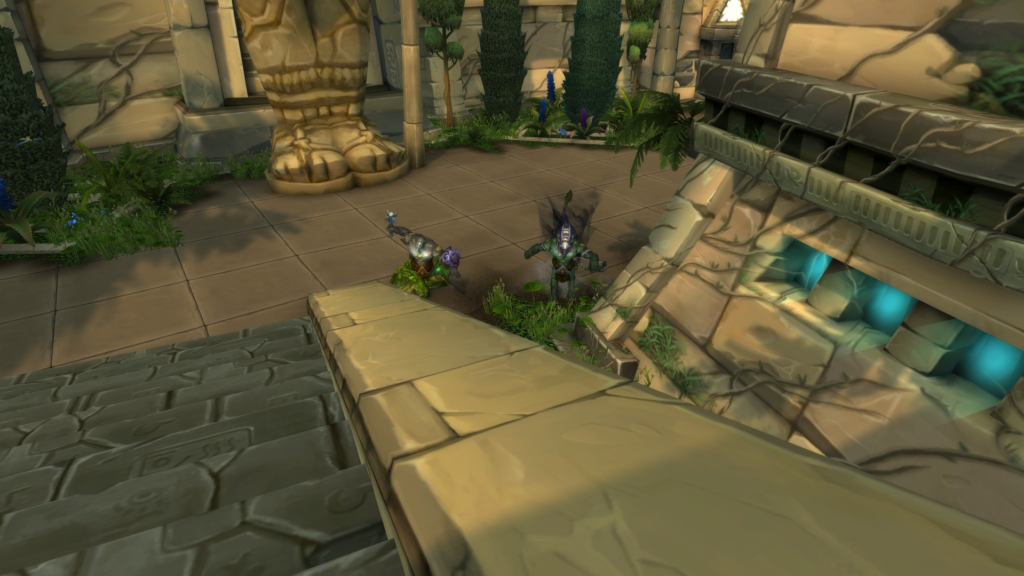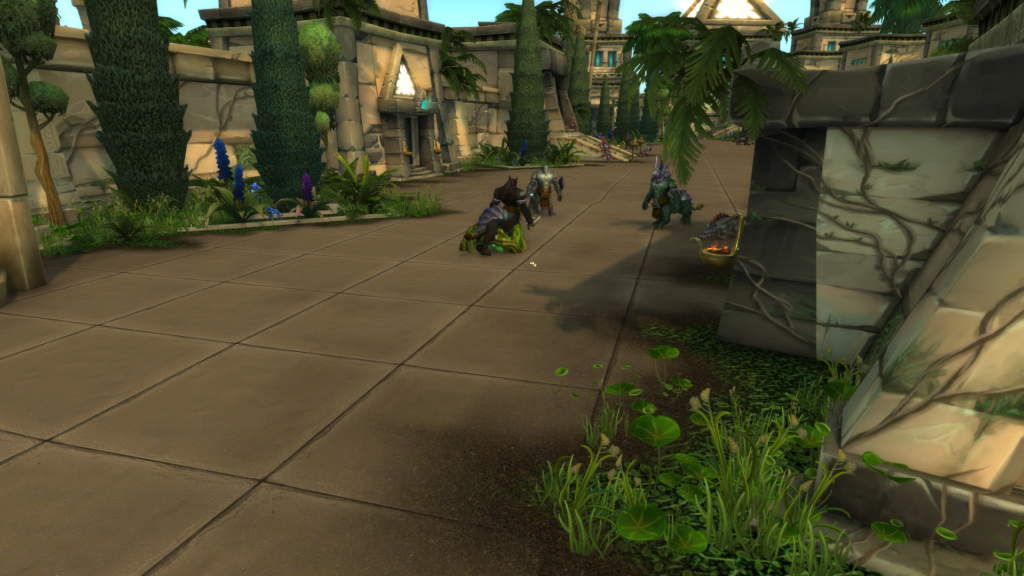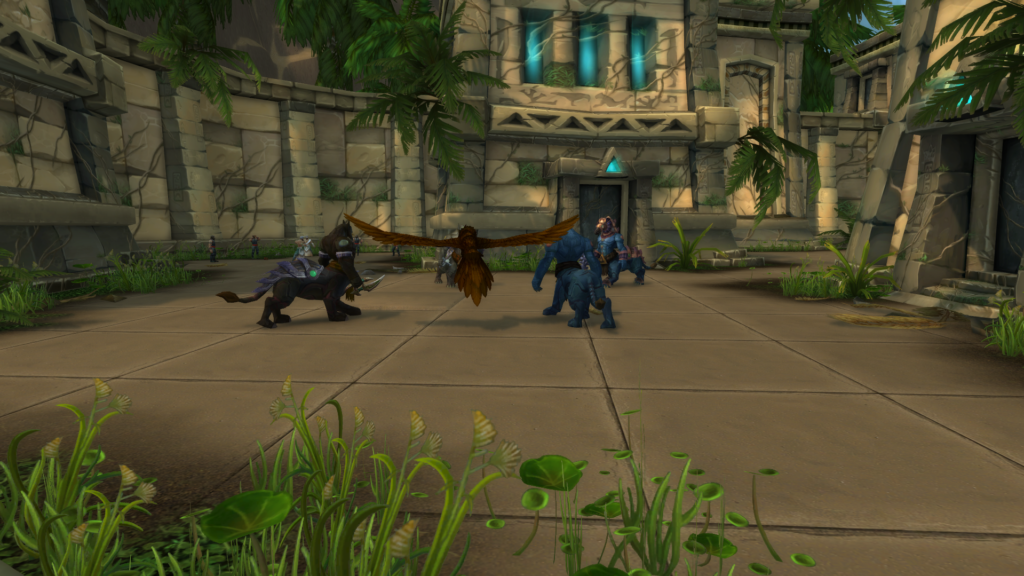Mythic+ Dungeons are a challenging content in the popular MMORPG World of Warcraft, and effective crowd control combinations can make it easier to complete these dungeons.
Crowd control is an important part of any group content, as it allows players to manage enemy mobs more effectively by disabling some of their abilities or preventing them from moving around.
This article will provide an overview of crowd control, the different types available in World of Warcraft, and strategies for applying them effectively during Mythic+ Dungeons.
Furthermore, tips for managing crowd control cooldowns and overcoming difficult crowd control strategies will also be explored.
Key Takeaways
- Crowd control is essential in mythic+ dungeons to manage enemy mobs and reduce incoming damage.
- Different types of crowd control, such as interrupts, stuns, roots, and silences, have unique strengths and weaknesses.
- Crafting effective crowd control strategies requires planning, communication, and coordination among team members.
- Utilizing crowd control effectively involves maximizing synergy between debuffs, crowd control, and positioning, as well as managing cooldowns and resources.
Overview of Crowd Control

Crowd Control is an important part of any successful mythic+ dungeon run in World of Warcraft, as it provides a means to limit enemy activity and optimize group strategies.
It is a critical part of mana management, as well as maximizing the effectiveness of each team member’s role.
Crowd control can help reduce incoming damage by limiting the number of enemies that are able to engage at one time, allowing for more efficient use of healing resources while also providing an opportunity for DPS players to maximize their potential output.
When used correctly, crowd control combinations can provide significant advantages in fight execution.
By understanding the different types of crowd control available and how they interact with one another, teams can more effectively coordinate their strategy and minimize mistakes during a dungeon run.
Transitioning into this knowledge will allow teams to better understand which crowd control combinations are most effective when attempting a mythic+ dungeon run.
Types of Crowd Control

Applying Crowd Control tactics can be likened to a game of chess where the player must carefully select their moves in order to achieve victory.
In World of Warcraft Mythic+ Dungeons, there are several types of Crowd Control that players should familiarize themselves with:
- Interrupts – This type of crowd control interrupts an enemy’s spellcasting or channeling abilities for a short duration.
- Stuns – A stun temporarily incapacitates an enemy, preventing them from taking any action for a few seconds.
- Roots – This type of crowd control restricts the movement speed and range of an enemy for a certain amount of time.
- Silences – A silence prevents enemies from using spells and other abilities for a short duration.
Each type of crowd control has its own unique strengths and weaknesses, making it important to understand how they interact with each other when forming effective combinations.
From this understanding, players will be able to craft strategies which enable them to succeed in Mythic+ Dungeons.
Transitioning into the subsequent section about ‘Crowd Control Combinations’, knowledge about each type is essential in order to properly apply them in group dynamics during these challenging dungeons.
Crowd Control Combinations
By carefully compounding multiple types of crowd control tactics, players are able to create powerful strategies that can be used to tackle challenging dungeon scenarios. Coordinating crowds and utilizing a crowd control rotation can help enhance the effectiveness of any given party’s strategy when tackling Mythic+ dungeons.
Crowd control combinations should be employed judiciously, as many abilities have diminishing returns if they are used too often or in rapid succession on the same target. Playing classes with strong crowd control options is key in allowing parties to create effective rotations for controlling mobs.
When planning an encounter, it is important to consider which class combinations are best suited for the task at hand and how each class’s capabilities can be utilized most efficiently. With careful consideration and thoughtful analysis, players can develop powerful strategies that will help them succeed in even the most difficult Mythic+ dungeons.
As such, preparing a well-planned crowd control strategy is essential for successful completion of these endgame challenges.
To further explore strategies for applying crowd control in World of Warcraft, we must now turn our attention towards understanding the specific mechanics behind various forms of CC.
Strategies for Applying Crowd Control
Careful consideration of various forms of crowd control can enable players to craft successful strategies for tackling challenging dungeon scenarios. Modifying rotations and managing pulls are two important components for developing an effective strategy. To better understand the nuances between these two, a comparison table is provided below:
| Modifying Rotations | Managing Pulls |
|---|---|
| Focuses on positioning mobs in a way that allows crowd control spells to be used more effectively | Focuses on limiting the number of mobs pulled at one time, which limits the amount of crowd control needed |
| Requires knowledge about how different mob types interact with each other | Requires knowledge about how many mobs can be safely handled by your party at once |
With an understanding of both modifying rotations and managing pulls, players can develop efficient strategies for using crowd control in mythic+ dungeons. Transitioning into the subsequent section will provide further insight into tips for utilizing these strategies effectively.
Tips for Effective Crowd Control

Utilizing a combination of strategies such as modifying rotations and managing pulls can enable players to effectively utilize crowd control in their adventures.
Coordinated teams should aim to maximize the synergy between different debuffs, crowd control techniques, and positioning.
Managing cooldowns is also important for successful crowd control – this requires both communication among team members and careful timing from individual players.
By utilizing these tips, players can increase their chances of success while adventuring in Mythic+ dungeons.
Furthermore, it is important to recognize that effective crowd control will vary depending on the group composition, dungeon being played, and the level of difficulty chosen; thus, flexibility is key when it comes to successful crowd control strategies.
In conclusion, with proper planning and coordination among team members, effective use of crowd control can be achieved in Mythic+ dungeons.
Managing Crowd Control Cooldowns
Successful crowd management requires precise timing of cooldowns among team members to maximize their effectiveness. In Mythic+ Dungeons, managing resources and combining classes are essential to achieve effective crowd control.
Here are four key elements for successfully managing cooldowns:
- Coordinate with your teammates to determine who will use which crowd control abilities.
- Utilize multi-target crowd control abilities when possible to reduce the number of targets that need individual attention.
- Monitor enemy health bars and cooldown timers in order to identify the optimal time for each member of the group to activate their crowd control abilities.
- Maximize the efficiency of each player’s available cooldowns by casting them on multiple targets whenever possible and avoiding overlapping effects with other players’ abilities.
By following these steps, teams can ensure they are using their available resources as efficiently as possible while navigating Mythic+ Dungeons and overcoming difficult crowd control strategies.
Overcoming Difficult Crowd Control Strategies
In the World of Warcraft, overcoming challenging crowd control strategies in Mythic+ Dungeons requires precise coordination and resource management.
Timing tactics must be carefully managed in order to effectively manage both incoming damage and crowd control abilities.
It is important to identify difficult crowds early on so that efficient strategies can be employed.
Crowd management should also be considered when planning out which spells and abilities should be used at any given time.
Having multiple players utilizing different crowd control abilities will help ensure success in these situations as well.
Utilizing a combination of long-term root effects, interrupts, stuns, knockbacks, and defensive cooldowns will allow for maximum crowd control efficiency while minimizing the amount of incoming damage taken by the group.
Knowing when to use each ability is key to overcoming difficult crowd control strategies and succeeding in Mythic+ dungeons.
Conclusion

Crowd control is an essential component of success in Mythic+ dungeons. With the right combinations, strategies, and timing, players can utilize crowd control to achieve victory.
To be successful with crowd control, players must understand the types of crowd control available and how to use them effectively. They should also be aware of managing cooldowns between uses and overcoming difficult enemy strategies.
Ultimately, by utilizing these techniques correctly, players can make the most out of their group’s crowd control capabilities.
Is it possible for a single player to master all aspects of crowd control? This question remains unanswered yet still serves as a challenge for any aspiring Mythic+ dungeon runner.
Join me on a thrilling adventure through the vast realms of World of Warcraft in my blog. Discover game tips, delve into mesmerizing lore, and unravel the secrets of this iconic MMORPG, all while connecting with a passionate community of fellow adventurers.
